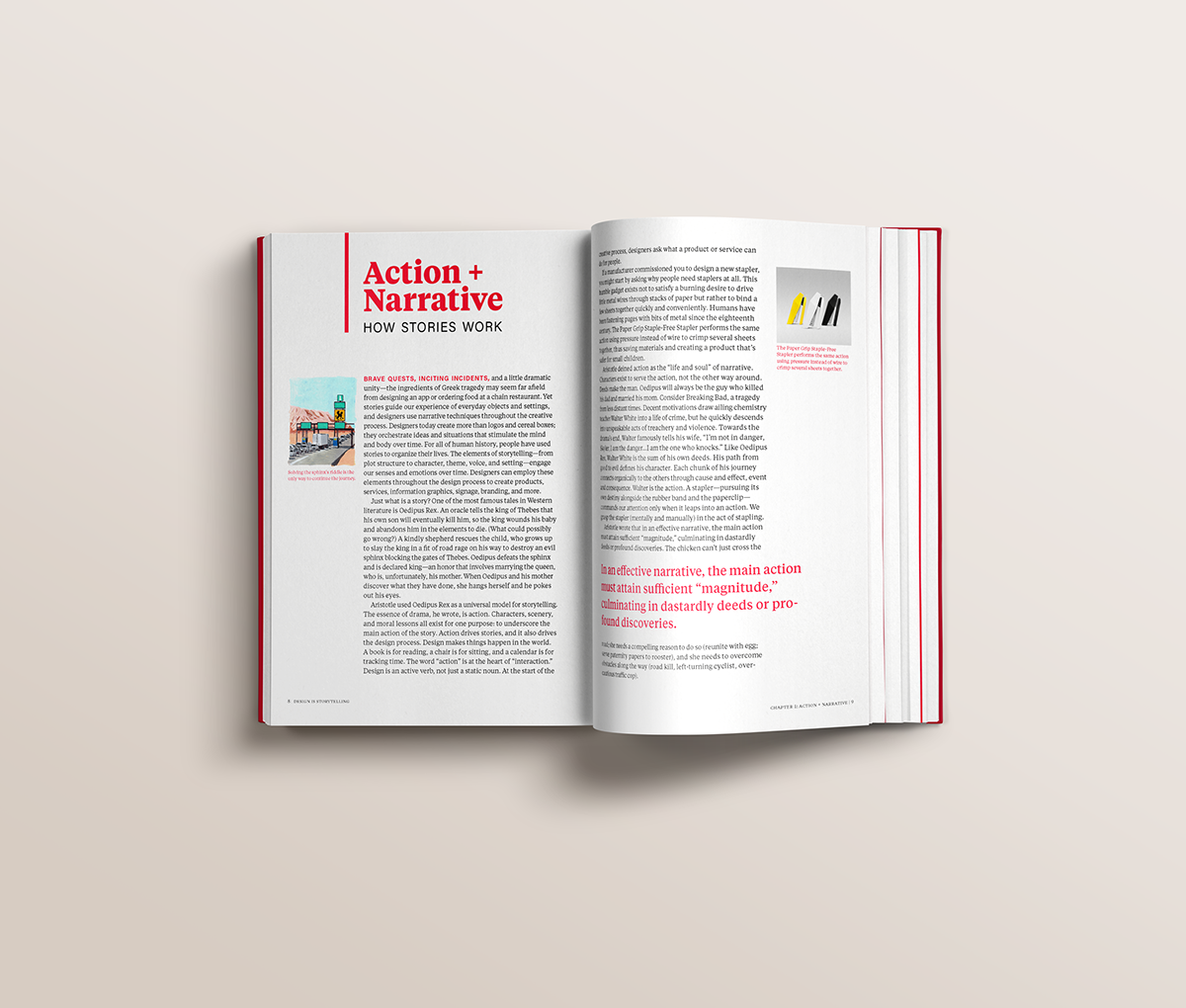
I never really thought all that much of how designing a physical space or a physical object is really about the invisible art of telling a story. In Design is Storytelling, by Ellen Lupton, that fact comes to the surface — that the decisions we make in creating tangible objects or immersive experiences can have a narrative arc to it.
This book was a bit uneven for me, but I suspect I am not its target audience, either. (That seems to be museum geeks, designers and business thinkers). Lupton is a senior curator of Contemporary Design at the Cooper Hewitt Smithsonian Design Museum (I didn’t even know that existed) and she brings a real museum-layout-theme thinking to this book. The prose felt a bit stiff to me, but many of the illustrations in here are helpful. (I guess, design IS story.)

She focuses her chapters on overarching ideas of Action, Emotion, and Sensation, and within there, she explores such things as Design Fiction and Narrative Arc of objects and space; creating fictional personas as you plan the design of something, particularly when a problem needs to be solved; and how multi-sensory design might inform the way something evolves over time. She explores building design, and app design, and business layout decisions (such as considering the concept of the Hero’s Journey within a typical IKEA store.) Colors, perceptions, interactions, touch … all these and more are explored here within the frame of experiencing stories.

I’m thinking more now of how museums work to consider layout of rooms and doors, and of the use of media in museums (sound, color, image, signs) that help a visitor navigate the “story” the curators are hoping to tell. I wonder about architects a bit different now, and the way that their work informs our interactions with buildings and space, and what narrative those design choices surface (or hide).
And I am thinking of a new 3D Printer Maker Club we have started at our school with our sixth graders. How can we get them to think beyond “making an object” to making objects as part of “telling a story” somehow? It seems to me, and it clearly visible is to Lupton here, that we can and probably should think of story as deeper and richer interactions with the designed world, and it all starts with narrative intentions.
Peace (designed to last for love),
Kevin
Reading this, I am reminded of a course I took a number of years ago, “Learning History at the Museum.” As part of the requirements, I visited two different museums and analyzed how the curators used design elements (space, lighting, placement of artifacts, etc.) to help tell their story and influence the audience. It forever changed my process for visiting museums. I think I would enjoy Lupton’s book!
Yeah .. sounds like you have a deeper knowledge already, Charlene.